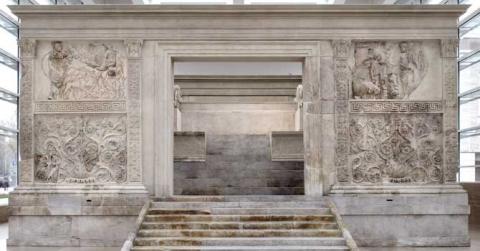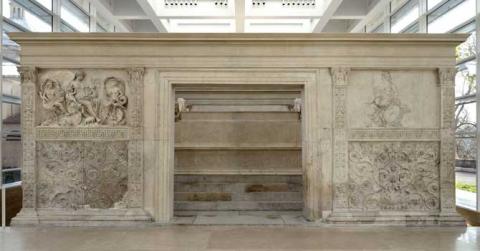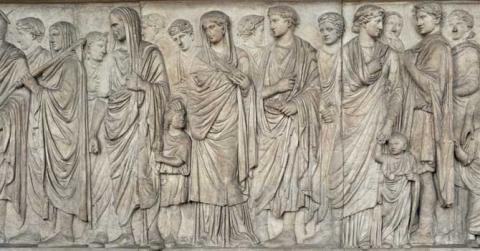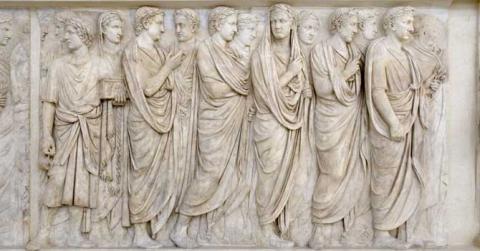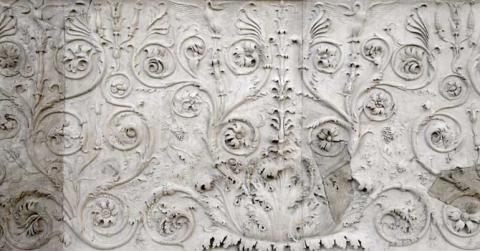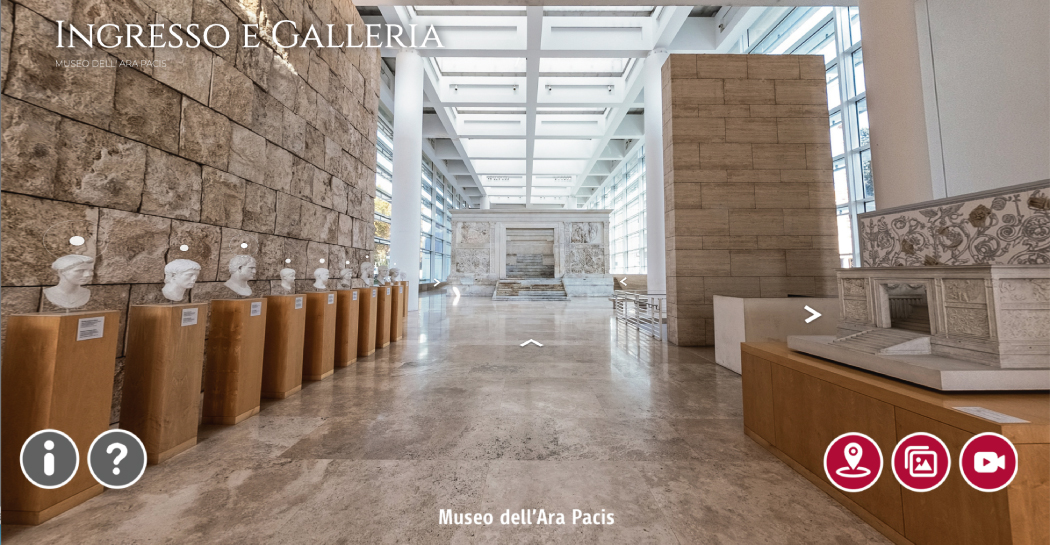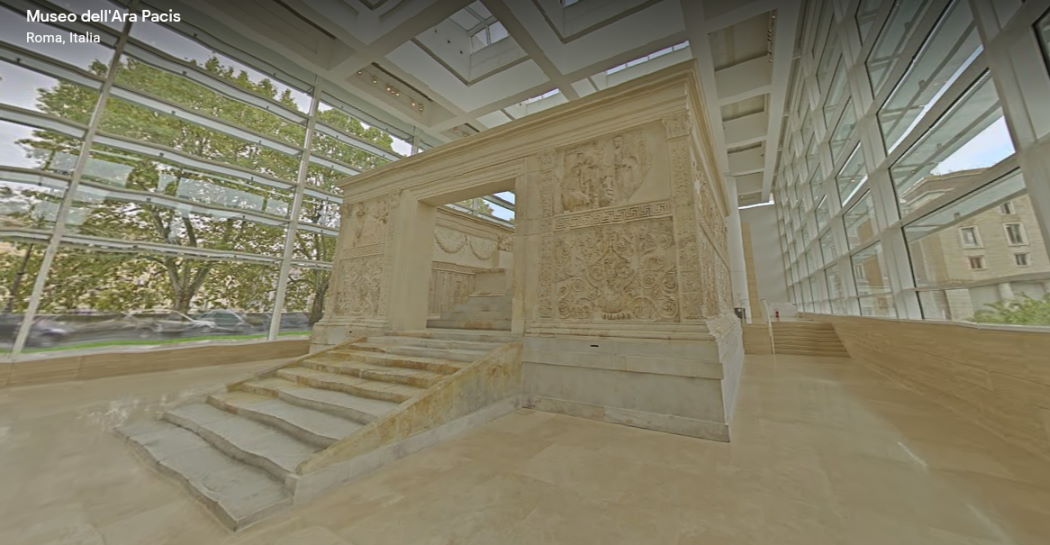External
The enclosure is placed on a large marble base, almost entirely restored, and is divided into two decorative registers: the lower vegetable, the upper figure, with representation of mythical scenes on either side of the two entrances and with a procession of characters on the other sides.
Between them is a band of separation with a swastika pattern, widely reconstructed.
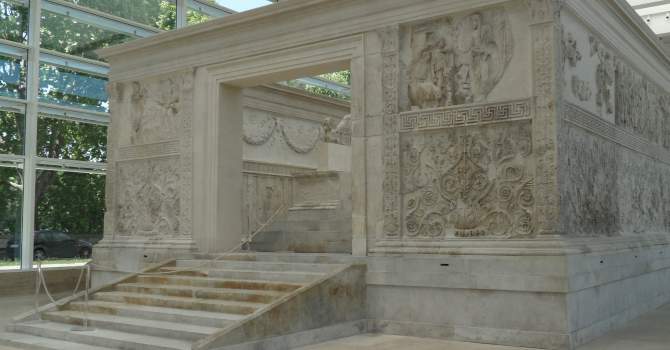

On the north and south sides, two crowded groups of people are represented, moving from left to right. Among them are priests, assistants to the cult, magistrates, men, women and children, whose historical identity can only be reconstructed.
The action of the procession is not entirely certain: in fact, according to some, The scene represents the reditus of Augustus, i.e. the welcoming ceremony given to the princeps on his return from his long stay in Gaul and Spain; according to others, it represents the inauguratio of the Ara Pacis itself, i.e. the ceremony during which, in 13 BC, the space on which the altar was to be built was delimited and consecrated.
The procession, on both sides of the enclosure, is opened by the lictors, followed by members of the highest priestly colleges and perhaps the consules. Immediately afterwards the members of Augustus' family start to parade.


























